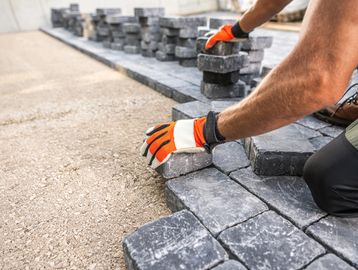Wildfire Home Hardening
How We Safeguard Your Home

Zone 0: 0-5 feet
Goal: Create a non-combustible buffer right next to the home to enhance wildfire protection zones.
Begin by removing all flammable vegetation, mulch, and debris. Instead of using wood mulch, opt for hardscape materials like gravel, concrete, or pavers to promote fire resilient landscaping. For fencing, use non-combustible materials such as metal or masonry for the first five feet attached to the home. To further implement home hardening techniques, install gutter guards to minimize combustible l

Zone 1: 5-30 feet
Goal: Implement fire resilient landscaping to reduce fuel load and slow fire spread toward the structure.
Trim trees to keep branches at least 6-10 feet off the ground, maintaining proper spacing between trees and the structure for effective wildfire protection zones. Move storage sheds away from the home and ensure under deck enclosures are in place to prevent ignition from beneath the deck. Separate landscape shrubs and bushes to further reduce fire spread. To prevent canopy fires from jumping between tree tops, trim or remove trees as necessary. Lastly, clear a minimum 10-foot radius around propane tanks, sheds, and outbuildings as part of essential home hardening techniques.

Zone 2: 30-100 feet
Goal: Break up fuel continuity and reduce the intensity of fire through effective fire resilient landscaping.
Thin out dense vegetation and remove ladder fuels with brush cutting and mastication. This will help create vertical and horizontal spacing between trees and brush to disrupt fire paths, enhancing wildfire protection zones.
Install access roads for fire personnel and equipment, eliminate dead or fallen trees, and implement home hardening techniques. Additionally, install outdoor water faucets or hose bibs to enable quick firefighting access, and consider installing water storage tanks.
Regular maintenance of property, such as removing leaves, pine needles, weeds, and debris from around the home, decks, and roofs, is essential for effective home hardening techniques. This practice not only supports fire resilient landscaping but also contributes to establishing wildfire protection zones.

Wildfire home protection zoning
We apply precise home hardening techniques and wildfire protection zones that adhere to state and insurance guidelines. These zones are divided into specific protection layers designed to slow or stop the spread of fire. We assess each property’s layout and create custom defensible space solutions that align with the California Public Resources Code, Cal Fire guidelines, and the inspection standards of the insurance industry.
From implementing fire resilient landscaping by clearing flammable materials in Zone 0 to spacing vegetation and thinning fuels in Zones 1 and 2, our work ensures that your property meets the highest standards of wildfire resilience. We don’t just clear land — we implement strategic, code-aligned upgrades that help keep your home safe and improve your insurability.
Our Partners


This website uses cookies.
We use cookies to analyze website traffic and optimize your website experience. By accepting our use of cookies, your data will be aggregated with all other user data.